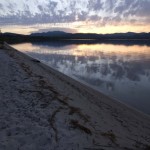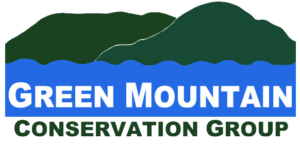 Looking Back at Year 1 of Ossipee Lake Natural Area Management
Looking Back at Year 1 of Ossipee Lake Natural Area Management
by Don Kent, Administrator for DRED
The Ossipee Lake Natural Area (OLNA) is one of the few remaining undeveloped public areas on Lake Ossipee. Shoals and a sandy shore are ideally suited to boating, swimming, and shore activities. In addition, the OLNA is the site of important natural and historical resources. The shoreline constitutes New Hampshire’s best remaining sandy pond shore system, which includes four exemplary natural communities and two remaining rare plant species. Nonrenewable, fragile, and rare prehistoric historical artifacts 500 to 11,000 years old occur throughout the OLNA.
The Department of Resources and Economic Development (DRED) initiated a deliberate and inclusive process for defining OLNA management to resolve impacts on resource protection, health, and safety. The centerpiece of the process is the OLNA Working Group – a commitment by state agencies, the Lakes Management Advisory Committee, the boating community, towns around the lake, and nongovernmental organizations to work together toward balancing protection of natural and historical resources, health, and safety with provision of public recreation.
The 17 members of the Working Group convened on four occasions between November 2008 and April 2009, culminating in “Managing the Ossipee Lake Natural Area”. The goals of the management plan are to sustain threatened and endangered plants and exemplary natural communities, preserve historical resources, and provide a clean, safe environment for recreation. The OLNA Working Group convened in the fall of 2009 to assess the short-term success of the management plan, and to develop additional mechanisms as necessary to ensure effective management of the area.
Natural Resource Protection
The summer of 2009 was the first year of a quantitative monitoring program so Natural Heritage made no definitive statements about the OLNA management plan’s success protecting plants and communities. Qualitatively, the plants and communities appeared to be similar in size and distribution to the prior year. However, human use of the closed area west of the Pine River was evident. In 2010, policing will increase west of the Pine River, and Natural Heritage will monitor the plants and communities and remove pine limbs near hairy hudsonia in the public use area.
Historical Resource Protection
DRED received no reports of found artifacts at the OLNA this summer, nor did the Division of Historical Resources report instances of damage to historical resources. The Working Group will not make any changes to the management plan regarding protection of historical resources.
Clean, Safe Environment for Recreation
OLNA E. coli counts were lower than the state standard on each of four sampling dates, and lower than counts at the Pine River and Red Brook sites. Turbidity was very low during a single sampling event 16 August 2009. The Working Group will continue monitoring E. coli in 2010.
A floating restroom remains a valid consideration as a new Clean Vessel Act project. The Department of Environmental Services (DES) is making progress toward securing federal funding.
The boaters, enforcement personnel, and Natural Heritage reported scant trash, debris, and waste at the OLNA in 2009. The pre-season clean-up, periodic policing by boaters and the carry in/carry out policy likely contributed to shore cleanliness. Boaters reported small amounts of glass on the public use shoreline, and DRED will institute a no glass policy in 2010.
Boaters indicated the canoe and kayak haul out area was too small, and other members of the Working Group concurred. DRED will double the size of the area for the 2010 season.
Enforcement
DRED Forest Rangers and the Department of Safety (DOS) Marine Patrol emphasized education rather than fines in 2009, and compliance with the plan was reasonably good. In 2010, DRED and DOS will issue citations to individuals in violation of the rules.
Education
The Working Group discussed the need to expand the education program beyond the lakeshore. Suggestions included signs and/or kiosks at additional public launches, providing brochures to canoe and kayak rental companies, and communicating with off-lake camps. The Green Mountain Conservation Group representative suggested the Departments of Resources and Economic Development (DRED), DES, and Fish and Game could collaborate to ensure full-time lake host presence at the Pine River boat launch, and perhaps at other launch locations.
Looking Ahead
Thanks to the Working Group and other committed stakeholders, the OLNA now has a reasonable chance to provide clean, safe recreation, while protecting natural and historical resources. To ensure a successful year 2 of the plan, the Working Group will hold a public meeting at Totem Pole Park 8 – 10 AM 8 May 2010, followed by a volunteer shoreline clean up of the OLNA. All are welcome.



